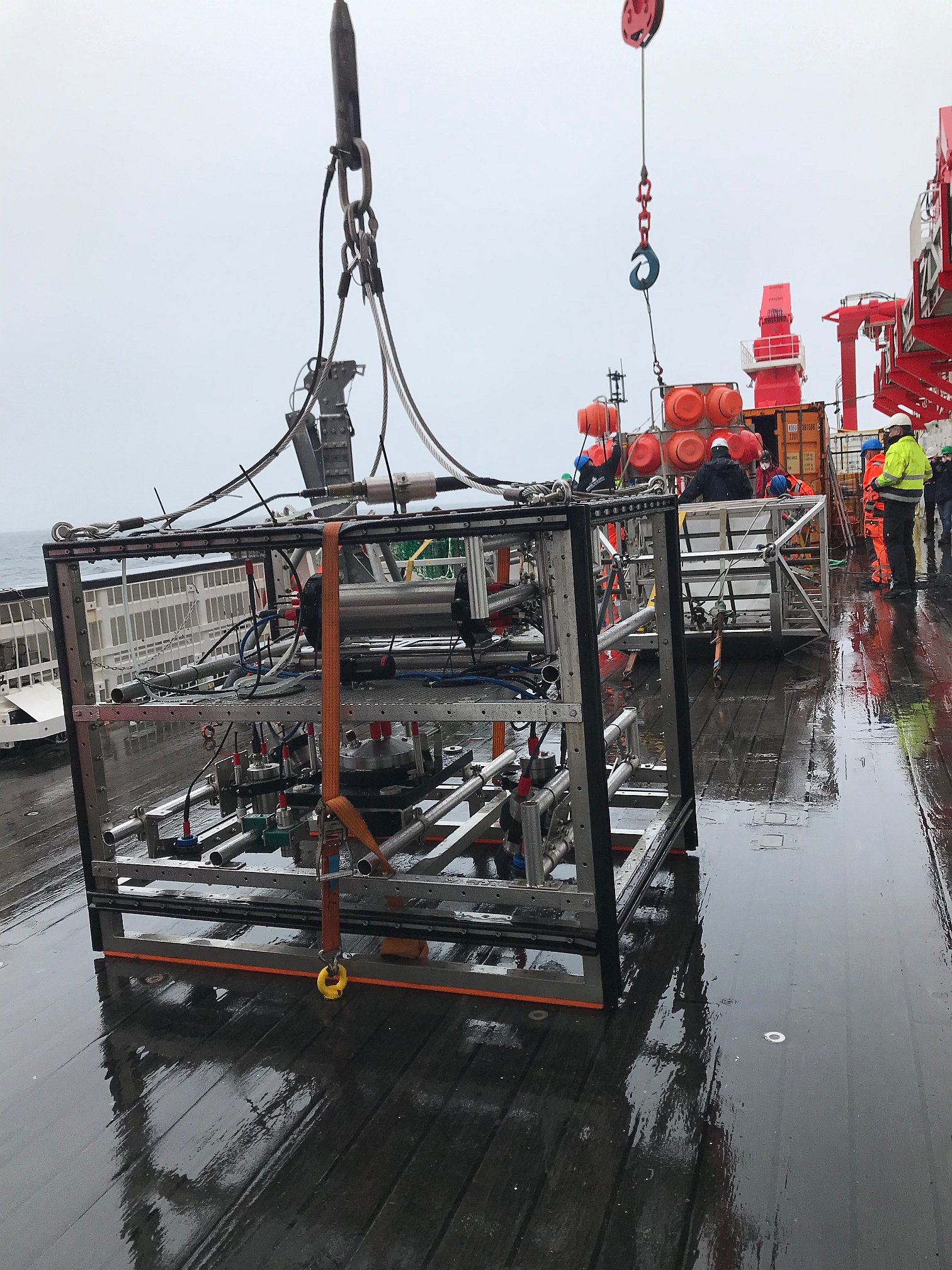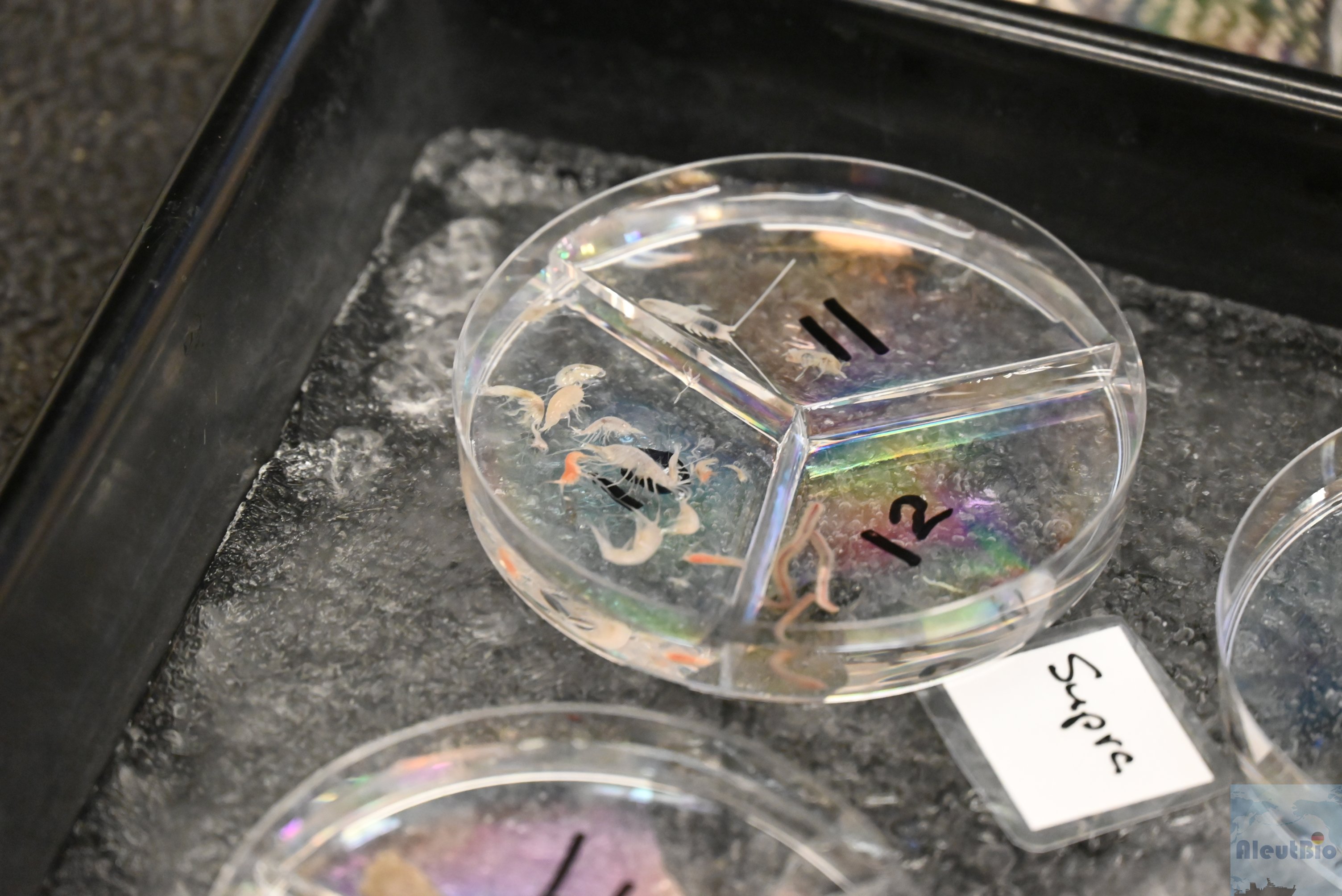A clean ocean
A clean ocean is a priority for the UN Decade for Ocean Sciences for the Sustainable Development 2021-2030 (Ocean Decade), where sources of pollution need to be identified, quantified, reduced, and removed from the ocean by 2030. The importance of a clean ocean to marine life is unquestionable as mentioned in the Manifesto proposed at the launch of the UN Decade “Clean Ocean Laboratory”. Pollutants can lead to loss of species, no matter how deep.
Trenches, such as the Aleutian trench, are unique ecosystems. They host endemic, long-lived species, with many unknown to science, that are one focus of the AleutBio Expedition. To study Trench biodiversity requires time and resources including the ship time, and expertise to operate the different sampling tools, and sort and identify the rich fauna. The AleutBio Expedition has given us a glimpse into this highly vulnerable biodiversity. We have visually investigated species from the samples collected and the observations made in the soft sediment habitats on the slopes. With video and still images from the OFOS, we have not seen any litter or obvious human created debris, although small plastic fragments are present in some of the material we sampled.
These hadal ecosystems also accumulate and trap pollutants from the vertical flux of from the ocean surface (algae, particles/marine snow), from the direct deposit of carrion, and from turbidites and lateral transport of sediment result of seismic events and unstable trench slopes. In general, the topography and isolation of the trenches promote the accumulation of pollutants, debris, and litter. Since the 1960s, these ecosystems and fauna have been considered unique by their natural conditions and adaptations to depth, darkness, soft almost liquid sediments, but always subject of anthropogenic impacts.
The recent explorations to these hadal depths in the region have confirmed the presence of litter in several Pacific trench systems (Kuril-Kamchatka, Ryukyu, Mariana), contaminants, pharmaceutical waste products within the sediment in others (Kermadec), plastic and synthetic fibers ingested by fauna (in fish and crustacea in many trenches: Kuril–Kamchatka, Izu-Bonin, Mariana, New Hebrides, Kermadec, Peru-Chile). This will not naturally reduce and will expand as inputs in the regional ocean increase. Deep-sea species are often long lived, the degradation of some of the pollutants and litter may resist and last for centuries; this combination may exacerbate negative consequences for hadal biodiversity. But then here, in the Aleutian trench, we find the unexpected. So far, from the samples obtained, and the visual observations made with the OFOS, we have relatively little pollution and a relatively pristine trench system with minimal litter and waste products. For some trenches, the opportunity to study the hadal ecosystems in a pristine condition has gone, however the observations made by the AleutBio Expedition give us hope.
The UN Ocean Decade seeks for new ideas to reduce the ocean pressures from the most challenging ocean pollutants. There are many ways to contribute; an important one is through the knowledge gained from the research of the AleutBio Expedition.



